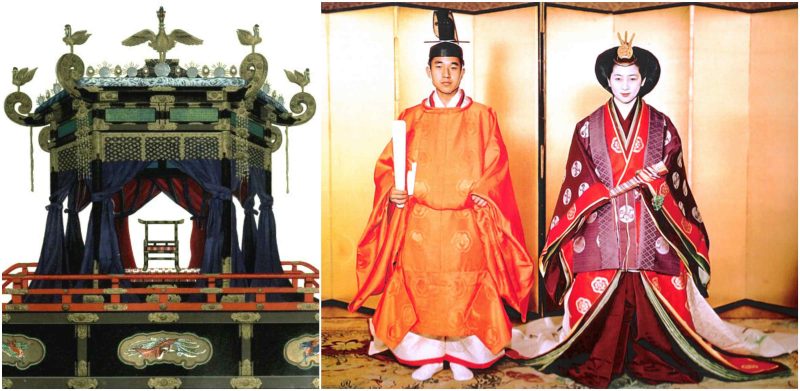Japan is the oldest continuous monarchy in the world.
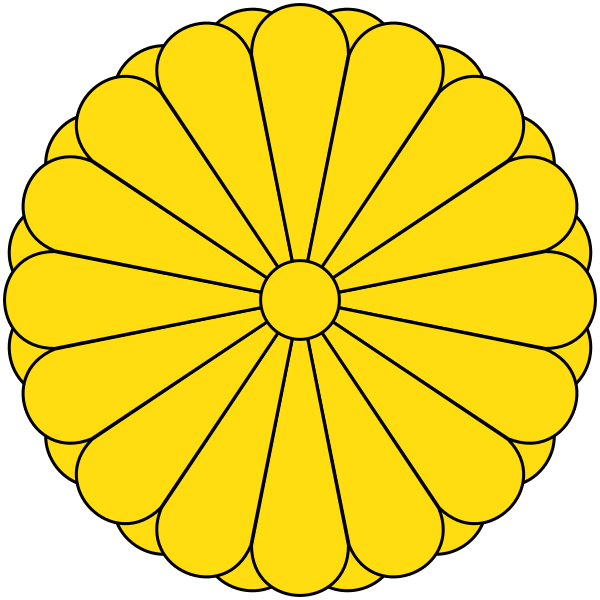
Though it’s a liberal democracy, Japan is also the oldest continuous monarchy in the world. According to widely accepted (though somewhat legendary) genealogy, Akihito’s family has ruled for some 2,700 years. Though we know little of the first 25 emperors — starting in 600 B.C. with Emperor Jimmu, said to be descended from the sun goddess Amaterasu — there is solid evidence of an unbroken hereditary line stretching from 500 A.D. to today.
The monarchy is often referred to as the Chrysanthemum Throne, which is a metaphor — but also an actual thing.
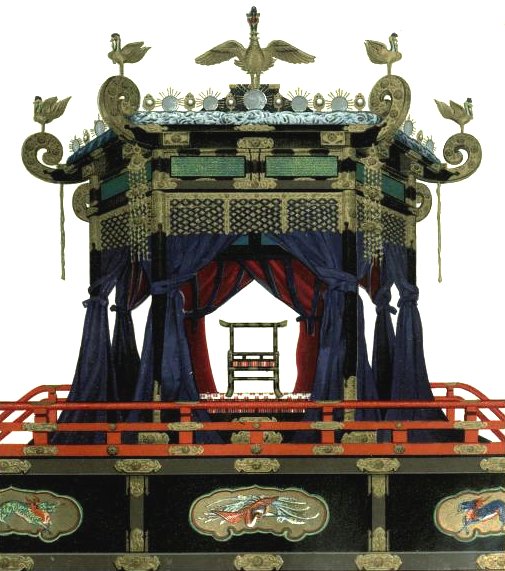
The Chrysanthemum Throne is the term used to identify the throne of the Emperor of Japan. The term also can refer specifically to the takamikura throne in the Shishin-den at Kyoto Imperial Palace.
Various other thrones or seats that are used by the Emperor during official functions, such as those used in the Tokyo Imperial palace or the throne used in the Speech from the Throne ceremony in the National Diet, are, however, not known as the “Chrysanthemum Throne”. In a metonymic sense, the “Chrysanthemum Throne” also refers rhetorically to the head of state and the institution of the Japanese monarchy itself.
Japan even bases its calendar on the emperor.
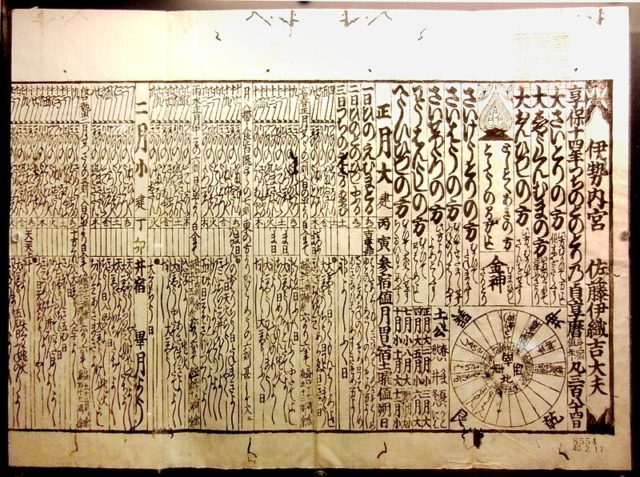
Japan has a unique calendar system that defines the year according to the emperor’s reign. For example, 2016 is expressed as Akihito’s 28th year on the throne. When his successor is crowned, the date on the calendar will reset to Year One. According to modern Japanese custom, when emperors die they receive new names reflecting the era in which they ruled. Akihito’s father, Hirohito, who ruled Japan during World War II, is known posthumously as Showa (“radiant Japan”). Akihito, crowned in 1989, will become Heisei, or “peace everywhere.”
Akihito broke with tradition when he married, becoming the first Japanese monarch to marry a commoner.
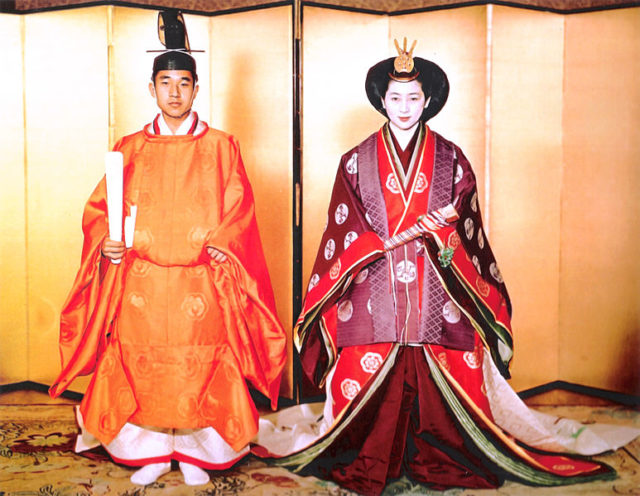
Until the 20th century, emperors usually had a chief wife and several concubines (all from noble families). Akihito was the first one to break the tradition. In 1957, he met Michiko Shoda on a tennis court. The Imperial Household Council (a body composed of the Prime Minister of Japan, the presiding officers of the two houses of the Diet of Japan, the Chief Justice of Japan, and two members of the Imperial family) formally approved the engagement of the Crown Prince to Michiko Shōda on 27 November 1958.
At that time, the media presented their encounter as a real “fairy tale”, or the “romance of the tennis court”. It was the first time a commoner would marry into the Imperial Family. The engagement ceremony took place on 14 January 1959, and the marriage on 10 April 1959. The Emperor and Empress have three children.
This week’s address was only the second time in Akihito’s reign — and the third time in history — that the emperor has addressed the Japanese public via radio or TV.
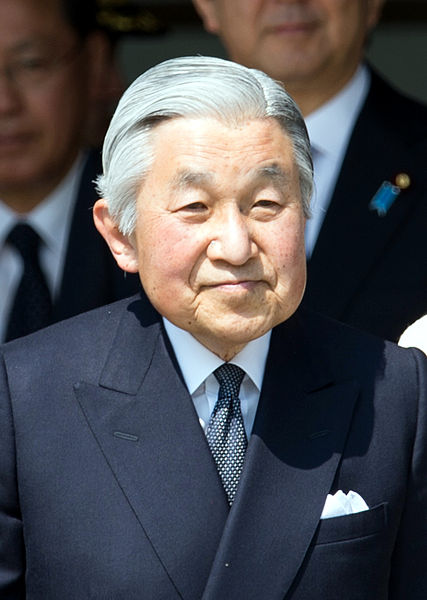
In 2011, Japanese TV networks broadcast the first public address from Akihito, who sought to soothe the nation after a devastating earthquake-tsunami hit the northeast coast of Japan, triggering a disaster at the nuclear power plant in Fukushima.
With 20,000 people dead or missing and tens of thousands displaced by these events, Emperor Akihito and Empress Nagako later visited the disaster zone and met with evacuees. Akihito’s address evoked memories of his father’s unprecedented radio broadcast to the nation in August 1945, when he announced Japan’s defeat by the Allies in World War II. For many Japanese people, Hirohito’s speech was the first time they had heard the emperor’s voice.
With only one male heir in the next generation of the royal family, Japan has considered amending the law to allow a woman to inherit the throne.
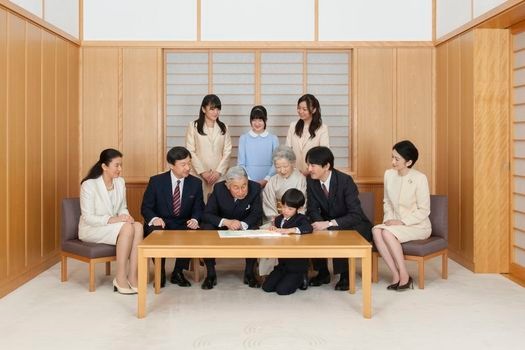
On 6 September 2006, the Emperor celebrated the birth of his first grandson, Prince Hisahito, the third child of the Emperor’s younger son. Prince Hisahito is the first male heir born to the Japanese imperial family in 41 years (since his father Prince Akishino) and could avert a possible succession crisis as the Emperor’s elder son, the Crown Prince Naruhito, has only one daughter – Princess Aiko.
Under Japan’s male-only succession law, Princess Aiko is not eligible for the throne. The birth of Prince Hisahito could mean that proposed changes to the law to allow Aiko to ascend the Chrysanthemum Throne will not go through after being temporarily shelved following the announcement of Princess Kiko’s third pregnancy in February 2006. The supporters of changes criticized the current law as it placed a burden on the few aging males old enough to perform royal duties as females left the family.
Still, as Prince Hisahito is the only male born into Japan’s royal family since 1965, Akihito’s possible retirement could revive talk of amending the law in order to include Princess Aiko.
